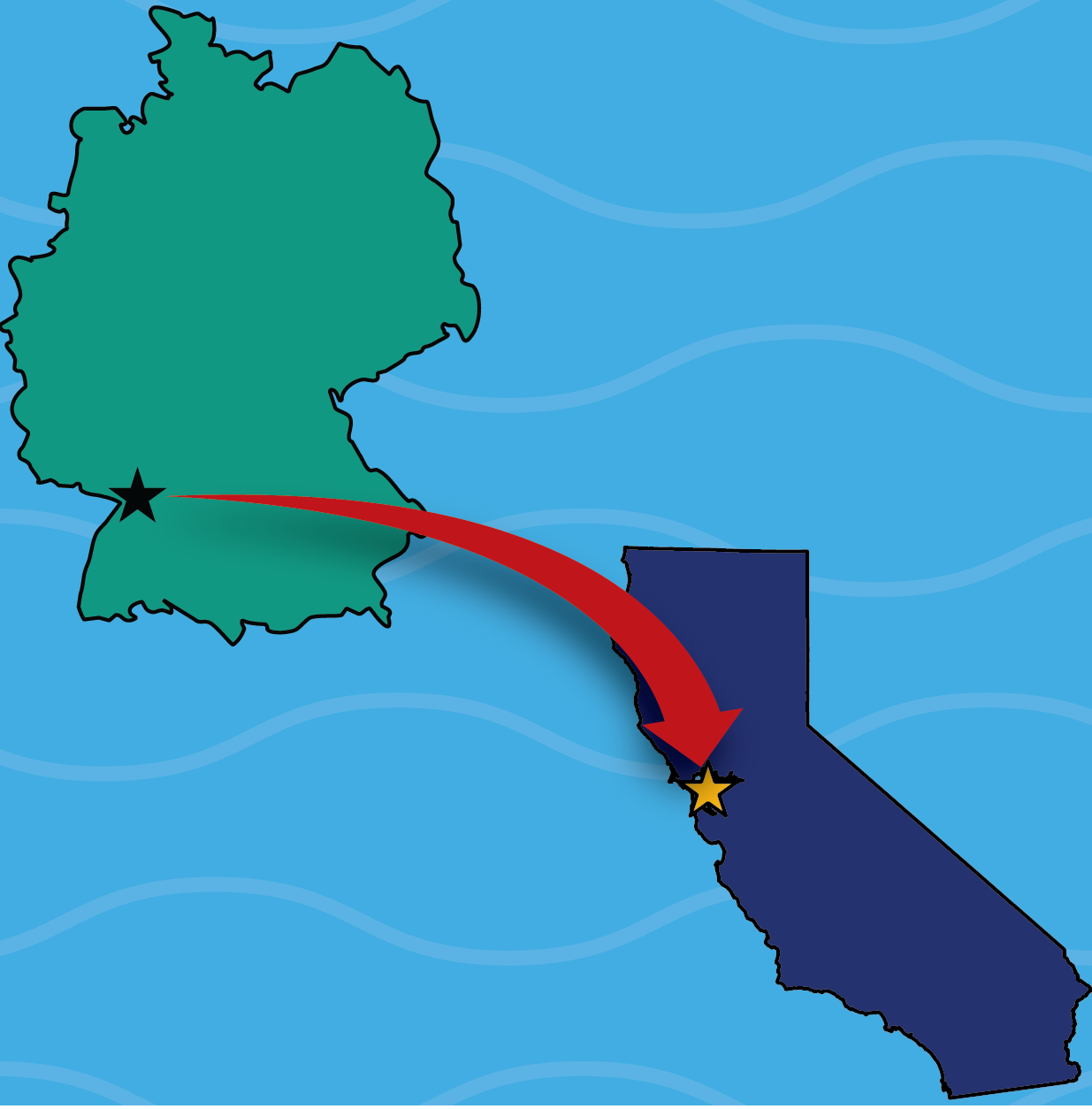Chemistry on the final frontier
Bench science goes 0-G

In July of 2005, the Cassini probe pointed its cameras at Enceladus, brilliantly silhouetted by the Sun, and captured several spectacular images of water ice plumes spewing from its south pole into outer space. This was Cassini’s third fly-by of the small, white moon of Saturn covered almost entirely by ice, and it prompted Enceladus’ promotion to one of the most promising places in the solar system to look for extraterrestrial life. These images and the influx of additional data from later Cassini fly-bys inspired researcher Dr. Anna Butterworth, a Project Scientist for astrobiology flight instrumentation development at UC Berkeley’s Space Sciences Laboratory. Now, 18 years after those photos were first taken, she hopes to equip a new probe with state-of-the-art technology to carry out more specialized, in-depth analyses of the Enceladus ice plumes.
Dr. Butterworth is interested in the some of the oldest and most fundamental questions that humanity faces. How did we, as living creatures, originate from non-living molecules? Are we alone in the universe, or is there extraterrestrial life somewhere out there? Her pursuit of these questions has led her to the ice plumes of Enceladus, which could contain information on what the early Earth’s oceans may have looked like. The source of these plumes, she explains, are the tidal forces of Saturn’s gravity on the moon, “stretching the ice crust so that cracks have appeared… called the tiger stripes, because it looks like a tiger has just ripped its claws across the South Pole.” These stripes allow water from the oceans of Enceladus to be jettisoned into outer space at extremely high speeds. This water forms clouds of ice particles, which are sitting ducks for a space probe to collect and analyze, if only it were equipped with the right tools. Cassini was able to determine that Enceladus has saltwater oceans similar to Earth’s, but lacked the sophistication to search for more complex markers of life such as amino acids.
That’s where Dr. Butterworth and her collaborators from the Mathies lab in the UC Berkeley College of Chemistry come in. For the past several years, they have been designing and creating a sample collector and analyzer to specifically search for more complex organic molecules, like those that were required for the origin of life on Earth. These instruments must be durable, reliable, small, and lightweight, on top of being functional in zero-gravity. The sample collector needs to be able to trap particles traveling at speeds over two thousand miles per hour and deliver those samples to the analyzer, all while being durable enough to withstand thousands of these capture cycles. Dr. Butterworth and her fellow scientists have designed a capture surface composed of pure, soft metals, such as indium, aluminum, and gold, into which the speeding ice particles are embedded. Once captured, tiny grooves in the metal surface allow the samples to be washed into the analyzer, where samples can be examined for amino acid content.
This “lab on a chip” must be able to carry out extremely precise analyses over a long lifetime, while meeting all the requirements for space flight outlined previously. While Cassini could measure samples with the mass spectrometer contained onboard, it could not carry out any of the sample manipulations that would be routine in a lab on Earth. “We want to go out there and make chemistry measurements in the solar system,” Dr. Butterworth states, and that’s exactly what the saucer-sized bundle of chips, wires, and microfluidic pumps can do. The detector processes nanoliter-scale water samples, first tagging biomolecules with a fluorescent dye. It then utilizes a combination of capillary electrophoresis—a technique that uses an electric field to separate molecules according to size and charge—and laser-induced fluorescence to separate the molecules and measure their quantities down to picomolar (10-12 moles/liter) concentrations, all in the zero-gravity environment of outer space. Not too shabby for a lab which fits in your hand and weighs less than eight pounds.
So how soon will we launch these instruments into the icy plumes of Enceladus? According to Dr. Butterworth, they may have their time to shine relatively soon (in NASA terms, the next decade or two). Preliminary tests on the zero-gravity simulating “Vomit Comet” have confirmed that the analyzer functions at both zero- and high-gravity, and the capture system has also demonstrated the ability to collect ice samples at velocities between two and six thousand miles per hour. In addition, NASA has expressed high interest in sending a mission to Enceladus in the coming years. At its most recent ten-year review, NASA listed Enceladus in its top two mission priorities for planetary sciences. “I think we can be optimistic that the mission will happen,” says Dr. Butterworth. “It won’t be next week, but it’ll be soon.” When it does, we may get closer than ever before to understanding the mechanisms for the origins of life and just how close other planetary bodies came to generating life of their own.
This article is part of the Spring 2023 issue.




